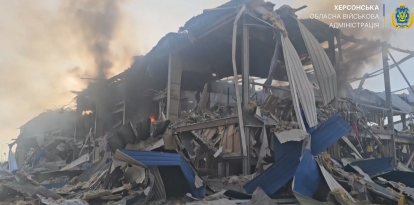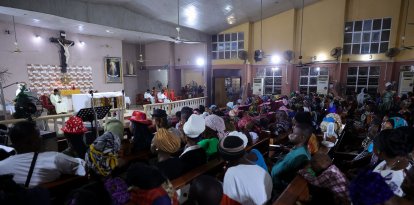Massive blackout in Chile: Government declares state of emergency after record blackout
The undersecretary of the Interior reported that the outage extended from the extreme north in Arica to the south in Los Lagos, covering practically the entire continental territory.

Image and source: Power line (Photo by Gints Ivuskans / AFP).
On Tuesday afternoon, Chile was plunged into chaos after a massive blackout left 99% of the national territory without electricity. Given the persistence of the outage, Gabriel Boric's government declared a state of emergency due to catastrophe and imposed a night curfew in a large part of the country, which will come into effect at 10:00 p.m. The Minister of the Interior, Carolina Tohá, informed that the Armed Forces have already been notified to deploy operations and guarantee citizen security amid the emergency.
“There is still a power outage between the regions of Arica and the Lakes: the President of the Republic has decided to declare a state of emergency due to a catastrophe. The processing required by this procedure has begun and will be effective immediately,” Tohá said.
According to Chile's National Electric Coordinator, the blackout was caused by a disconnection in the 500 kV transmission system in the Norte Chico sector in the central part of the country. The exact cause of the outage is still under investigation.
A widespread and unprecedented outage
The National Service for Disaster Prevention and Response (SENAPRED) confirmed that the power outage began at 3:15 p.m. and affected the entire national electricity system.
The outage affected the Arica and Parinacota Region to the Los Lagos Region, including the island of Chiloé. According to estimates based on the population of the affected areas, it impacted more than 19 million people.
#SENAPREDInforma A la hora del presente reporte, se registra un corte masivo del suministro de energía eléctrica, el cual afecta el territorio entre las regiones las regiones de Arica y Parinacota y Los Lagos - Alteración de suministro de electricidad (preliminar). Infórmate… pic.twitter.com/8NNWac45VX
— SENAPRED (@Senapred) February 25, 2025
In response, the Committee for Risk and Disaster Management (COGRID), which is meeting at SENAPRED's offices to coordinate actions in response to this unprecedented emergency, was convened as a matter of urgency.
Chaos and concern
The blackout has directly impacted the daily lives of millions of Chileans. In the middle of a heat wave, with temperatures exceeding 95°F in several regions, the lack of electricity has left cooling and refrigeration systems out of order, aggravating conditions for the population.
Essential services such as the Santiago Metro were inoperative, which led to station evacuation and congestion in the streets. Users on social media also reported intermittent cuts in cell phone services, making communication even more difficult at a critical moment.
In regions such as Antofagasta, Valparaíso, the Metropolitan Region, O'Higgins and Concepción, traffic lights stopped working, prompting warnings from transportation authorities for citizens to exercise extreme caution. Local radios, operating with emergency generators, have been one of the few sources of constant information for the population.
The heat wave, which began at the end of January, has increased the demand for electricity due to the massive use of air conditioning equipment, which could have put the energy infrastructure under pressure.
Electricity service returned in some areas
Hours after the blackout, electricity supply began to be restored in several affected areas. According to reports from Radio Bío Bío, residents of Concepción reported that electricity returned around 20:40 (local time). In other regions, such as Valparaíso, some listeners indicated that service was restored minutes earlier, although with some intermittency. Partial service recovery was also confirmed in more distant areas, such as Chiloé and Antofagasta.
RECOMMENDATION





















